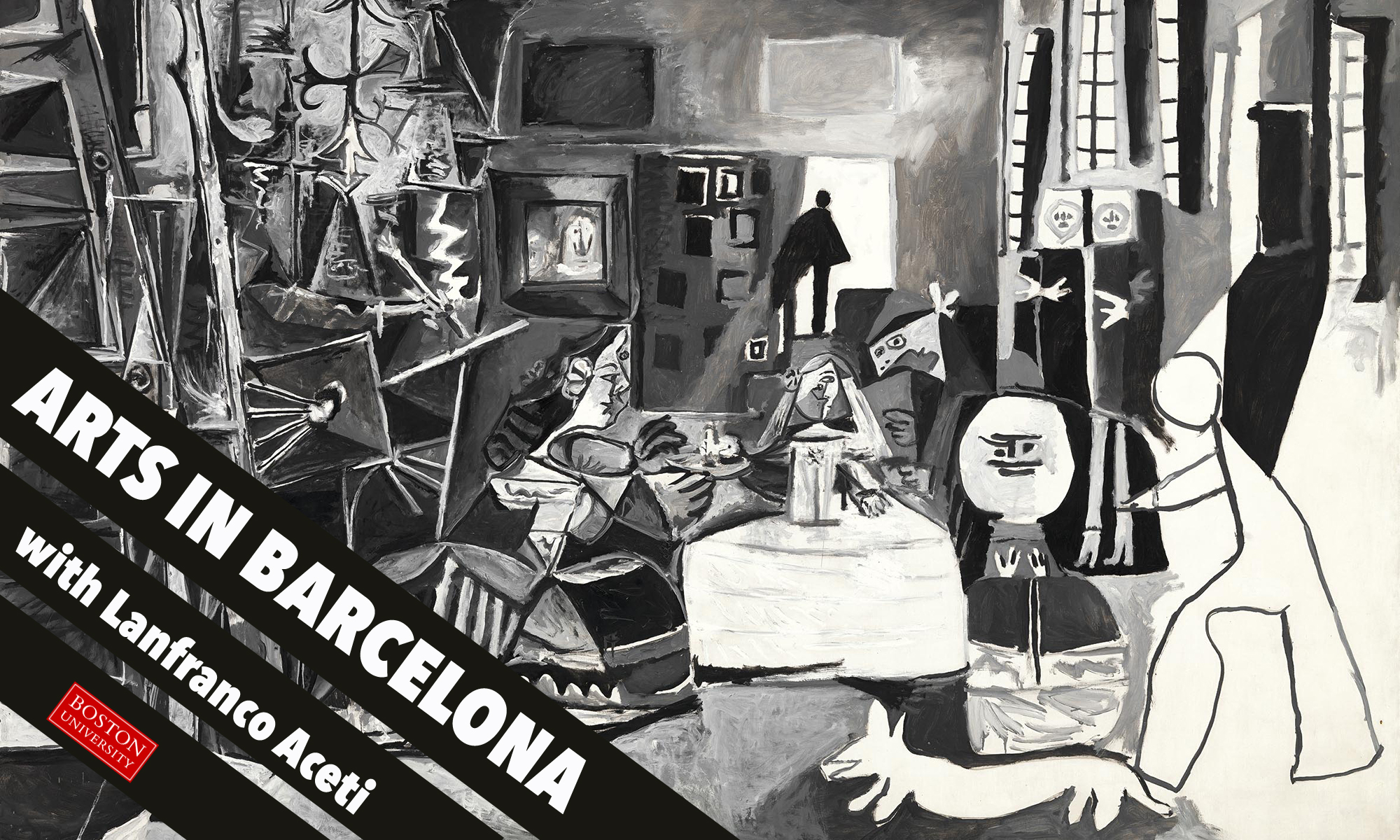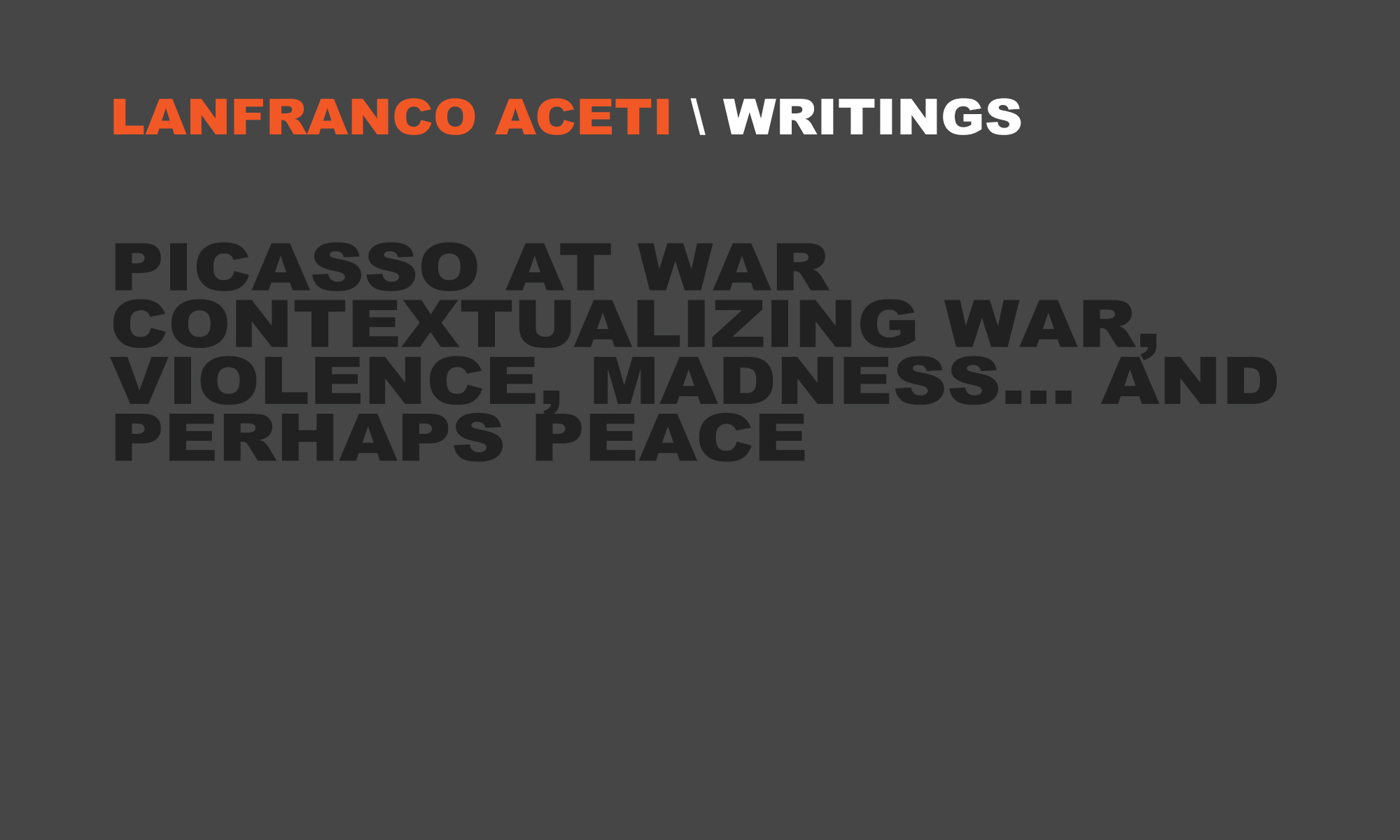Spent the day at the Picasso Museum in Barcelona for the Arts in Barcelona class that I am teaching as part of the Arts Administration @ Boston University. We will be working with the students on a series of initiatives and projects developing ideas, journals, and art projects. Of course, that also includes the writing of an academic paper. The one below is the abstract of the paper I am currently writing.
PICASSO AT WAR: CONTEXTUALIZING WAR, VIOLENCE, MADNESS… AND PERHAPS PEACE
ABSTRACT
The conflict between the representation of reality in a linear timeline for an historically clear visualization of progress as a logical series of actions and reactions fails – or should fail – when faced with the complexity of human endeavors and emotive engagements. The essay reinterprets Pablo Picasso’s political artworks without searching for a logical and coherent explanation that neatly defines the ideological and political camp of the artist, but as a reflection of a career that is characterized by the events of its times and that cannot and should not be reduced to a monolithic political coherent characterization of the artist. If in the life of an artist there does exist a variety of aesthetic periods, it should be obvious that there also does exist a variety of political seasons. These political moments are shaped by a personal understanding of and evolutionary engagement with political historical moments, which unfold and reveal the realities and complexities of ideological and political positioning.
The essay, taking as its starting point a visit to the Museo Nacional Centro de Arte Reina Sofía, Museo del Prado, Museu Picasso in Barcelona, and Tate Liverpool’s exhibition Picasso: Peace and Freedom, will analyze arguments brought forward in two reviews: the first by Alex Danchev “Picasso’s Politics” and the second by John Richardson “How Political Was Picasso?” in order to develop an understanding of artists, and Pablo Picasso in particular, as people that are immersed in their own times and whose politics and political relations are necessarily due to change as time and events alter their understanding of politics’ ideological illusions and mythological propaganda. The complexity of Picasso’s politics – preceding and following the Spanish civil war context – cannot be brushed aside by a simplistic representation of the artist as a narcissist or self-serving publicity hound. At times in the art historians’ interpretations of the artist’s politics there is no other space of analysis offered than that of conformity within a dualistic definition of politics, which does not allow George Orwell’s Homage to Catalunia or Animal Farm to exist as insight into the art of Spain – since everything has to be formally linked and sewn together in an understanding of war, violence, madness and the illusion of peace as neatly fitting pieces of a puzzle constructed according to the notions of the body politic of the localized space and time, within which both the artist and the interpreter live in and conform to.
The essay’s conclusive argument is that the relationship between art and politics is one of servitude, enslavement and subjugation in which the artist, as in the example of Picasso’s portrait of Stalin for Les Lettres Françaises on March12, 1953, has to be totally acquiescent to and dominated by the political orthodoxy of the institution: be this the nation state, the party or the corporation. Otherwise rejection, censorship, imprisonment and death might ensue.
KEYWORDS
Cultural context, Pablo Picasso, war, violence, madness, peace


